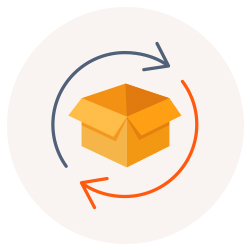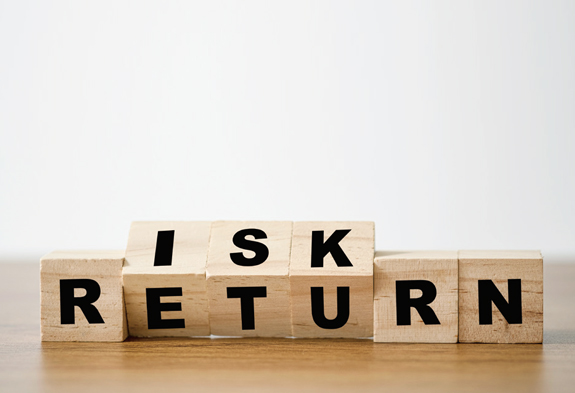Return Competition: The Last Piece of the
Puzzle to Satisfy Consumers
Until now, the competition among e-Commerce companies was mainly focused on speed, with prime examples such as Dawn Delivery and Rocket Delivery. However, now that speed-based competition is at a critical point with same-day delivery no longer a dream, e-Commerce companies are turning their attention to return services. Return services are nothing new, but with competition, the companies are now focusing on enhancing quality by enabling free or easy returns. Let’s take a look at the fierce competition among e-Commerce players hoping to boost consumer satisfaction levels with their return services.

Speed is a “must” and now it’s time to compete over convenient return services
Korea’s “ppalli ppalli” culture had profound implications on the domestic logistics industry. The country’s small size and advanced traffic network helped it to be well positioned to satisfy the consumers’ “ppalli ppalli” needs. The e-Commerce industry was the biggest beneficiary in the local distribution market that boasts the world’s best logistics chain. The success of the e-Commerce companies was owed to the fact that they had an edge in price competitiveness compared to the offline industry and that fast delivery was deemed the industry’s last resort to try to overcome its shortcoming, which is that consumers can not touch or try on items before making a purchase.
As the struggle for survival became increasingly intense, so did the speed competition. And it was Coupang that fired the first shot. With its speedy Rocket Delivery service, Coupang established an online shopping culture where next-day delivery is natural and eventually led to cut-throat speed competition such as Same-day Delivery or Dawn Delivery. However, customers who are already used to the convenience brought forward by fast delivery now want something more than just speed.
The fact that consumer satisfaction levels are highest when consumers are able to experience and try on items offline is what’s driving the return competition in the e-Commerce industry. It’s natural for the return rate to be high since the consumers are not able to try on or see the items in person. Players in the e-Commerce industry are leveraging this trend to make returns easier and more convenient for consumers, although the expense the companies have to bear is high in the short term. In a nutshell, return services are the last card that e-Commerce companies are putting on the table to satisfy consumers, who are no longer easy to please with lower prices and fast delivery alone.

Putting customer satisfaction before short-term losses
Fashion and accessories is an area that has always had a high return rate. The return rate of the online fashion market is around 40% which is over four-fold that of the offline market average of 9%, and far above 30%, the average of the e-Commerce market. This is because given the nature of fashion and accessory items, consumers can find out how accurate the information provided in the detail page is as soon as they try them on.
Again, it was Coupang that initiated the competition of return services. Coupang, which introduced its Wow Membership program with a monthly subscription fee of 2,900 won in 2018, proudly announced that for Rocket Delivery items, it would offer free delivery and free return within 30 days from the date of purchase. There is no delivery fee even if the decision to return the goods is purely based on the consumers’ own preferences; and C. Avenue, a premium fashion brand shop operated within the Coupang site provides free return services even for non-Rocket Delivery goods.
Again, it was Coupang that initiated the competition of return services. Coupang, which introduced its Wow Membership program with a monthly subscription fee of 2,900 won in 2018, proudly announced that for Rocket Delivery items, it would offer free delivery and free return within 30 days from the date of purchase. There is no delivery fee even if the decision to return the goods is purely based on the consumers’ own preferences; and C. Avenue, a premium fashion brand shop operated within the Coupang site provides free return services even for non-Rocket Delivery goods.

Bending over backwards to offset its decreasing offline sales with online distribution, Shinsegae is also actively rolling out free return services. Shinsegae SSG.com provides both free delivery and free return of all goods sold by Shinsegae. G9 refunds the return fee paid by the customer after he or she requests a return on the following day in the form of G9 cash after confirming that the item has been returned.
The home shopping industry is also turning its attention to return services. Shinsegae TV Shopping, GS Home Shopping, and Hyundai Home Shopping all allow consumers to return the goods they purchased through convenience stores.
This means the consumers no longer have to wait for the courier, or the delivery person to come to pick up the goods. The initiative, implemented by taking into account that one of the biggest drivers behind customer complaints was delay in retrieval of goods, led to a huge increase in sales. And CJ O Shopping and Lotte Home Shopping introduced same-day retrieval services for goods sold via TV home shopping.
Although it provides a return service like other companies, 11 Street aims to reduce the amount it ends up paying through a strategic alliance with an insurance provider. If a consumer returns a product for no particular reason, it is the insurance provider that pays the delivery fee. Now, consumers who were hesitant to make a purchase, worried that the color or size might not be what they expected, can proceed with making purchases with less concerns. This is because they do not have to pay return fees even if they decide to return what they had bought simply because they changed their minds.
Fresh food, an area with increasingly intense competition with the spread of COVID-19 is also where companies are competing with one another to roll out free return services. Being fresh food, it is fair to assume that they cannot be returned, but Wemakeprice’s Super Fresh, Auction’s Farmer Story, and Emart’s HMR brand, Peacock all offer free return services for fresh food if consumers are not satisfied with quality. There is no well-defined standard on returns as the experience each person gets is different even if the food is the same.
Although it provides a return service like other companies, 11 Street aims to reduce the amount it ends up paying through a strategic alliance with an insurance provider. If a consumer returns a product for no particular reason, it is the insurance provider that pays the delivery fee. Now, consumers who were hesitant to make a purchase, worried that the color or size might not be what they expected, can proceed with making purchases with less concerns. This is because they do not have to pay return fees even if they decide to return what they had bought simply because they changed their minds.
Fresh food, an area with increasingly intense competition with the spread of COVID-19 is also where companies are competing with one another to roll out free return services. Being fresh food, it is fair to assume that they cannot be returned, but Wemakeprice’s Super Fresh, Auction’s Farmer Story, and Emart’s HMR brand, Peacock all offer free return services for fresh food if consumers are not satisfied with quality. There is no well-defined standard on returns as the experience each person gets is different even if the food is the same.

Competition for return services is set to intensify for some time in the future
The prevailing view is that as with competition for speed, the return competition is set to intensify, with various e-Commerce players competitively introducing unprecedented return services. At the same time, the consequences of such fierce competition are expected to be severe. We have already witnessed the repercussions when small and medium-sized companies with limited financial resources either struggled to make ends meet or went downhill after engaging in a race to the bottom to provide free delivery services.
Industry insiders point out that in the end, the last companies standing will be e-Commerce giants with capital and financial resources since return services require twice as much delivery cost with items sent out and retrieved at the same time. According to UPS’s recently published report, “Pulse of the Online Shopper,” return fees account for up to 60% of the price of the product.
In addition, another dilemma that the industry has to face is whether or not they should either stop providing or start reducing return services. The biggest problem that comes with return services is consumers who take advantage of the policy. When some malicious consumers take advantage of the system, the cost increase caused as a result will simply be too huge. A case in point is Tmon, which launched free return services for all of its products back in 2015, then ceased providing such services two years later. Actually, no longer providing a service once given to consumers easily leads to weaker competitiveness. For this reason, halting or reducing provision of return services is not an easy task.
Nevertheless, the competition in return services is set to intensify, with the fashion industry that has traditionally had high return rates at the center. This is because the increase in cost brought about by fierce competition is cancelled out by more purchases and higher sales. Also, it is time to put a razor-sharp focus on improving consumer satisfaction, with more and more people shopping online and turning to revenge spending during the COVID-19 pandemic. For the aforementioned reasons, the e-Commerce industry’s fight to win consumers with return services is expected to grow and intensify even if it means there are some side effects along the way.
In addition, another dilemma that the industry has to face is whether or not they should either stop providing or start reducing return services. The biggest problem that comes with return services is consumers who take advantage of the policy. When some malicious consumers take advantage of the system, the cost increase caused as a result will simply be too huge. A case in point is Tmon, which launched free return services for all of its products back in 2015, then ceased providing such services two years later. Actually, no longer providing a service once given to consumers easily leads to weaker competitiveness. For this reason, halting or reducing provision of return services is not an easy task.
Nevertheless, the competition in return services is set to intensify, with the fashion industry that has traditionally had high return rates at the center. This is because the increase in cost brought about by fierce competition is cancelled out by more purchases and higher sales. Also, it is time to put a razor-sharp focus on improving consumer satisfaction, with more and more people shopping online and turning to revenge spending during the COVID-19 pandemic. For the aforementioned reasons, the e-Commerce industry’s fight to win consumers with return services is expected to grow and intensify even if it means there are some side effects along the way.
2021.07.01

